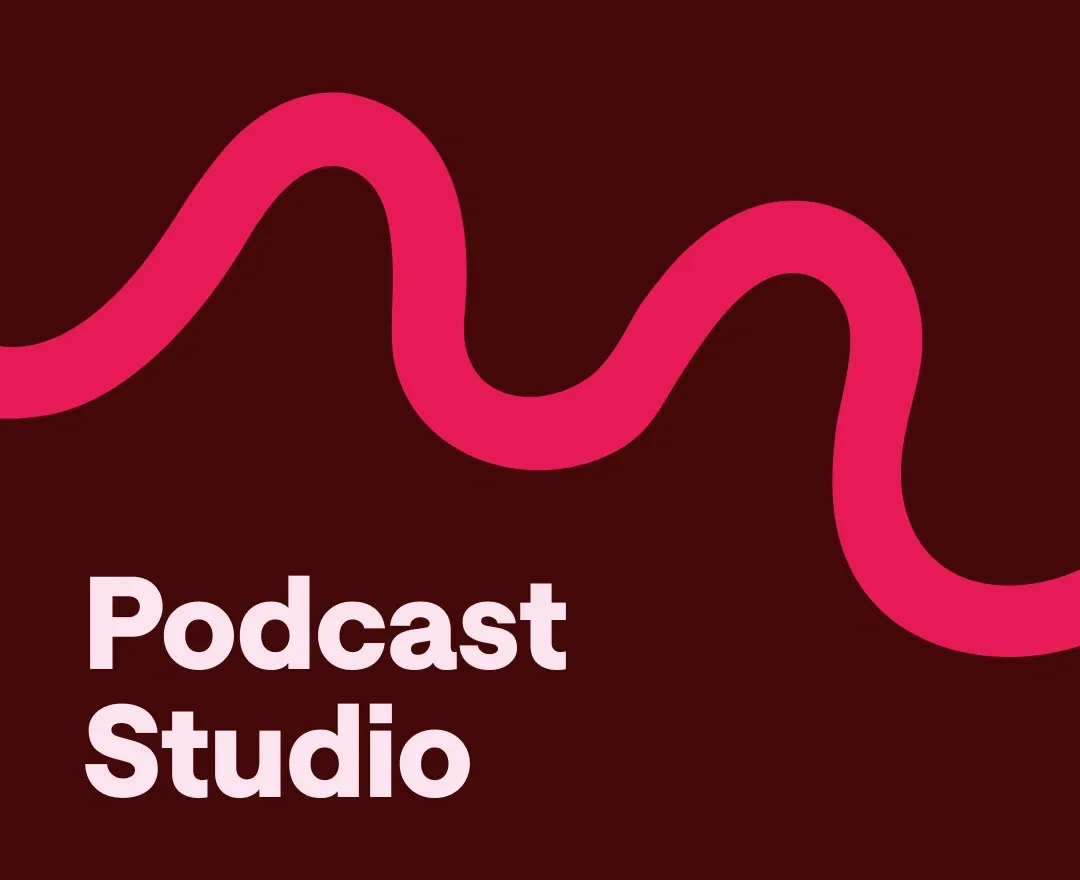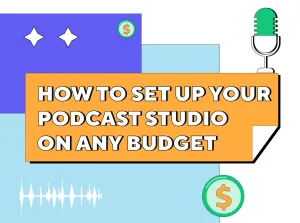Have you ever envied the podcasters with a fancy podcast studio setup showing off their expensive podcast equipment, neon lights, and top-quality microphones? That's probably what you think of when you imagine your dream podcast studio.
But trust us, although it looks extremely Instagram-worthy, you don't really need to buy all of those expensive podcast recording equipment to build a quality podcast studio. In fact, you can even make a podcast studio at home if you follow some of our tips and tricks. And unless you're a video podcaster, you definitely don't need to spend money on those neon lights.
So, let's see what you really need to create a comfortable, fun, and yet soundproof podcast studio at home.
How to create a home podcast studio?
Don't know how to create a podcast studio with little budget? There are two ways to approach it: the conventional and modern ways. We'll talk about both in this article. Let's start with the one that you're already familiar with: the traditional approach.
Build a professional podcast studio
When we think of a podcasting studio, we usually imagine an actual, physical space that has everything needed for quality podcast production. If you want to build a home studio, this usually means you should find the perfect podcast recording room at your place. So let's see what you need for that!
1) Pick the quietest room
Most of the homes are not built with quality recording in mind. So most probably, your house will not have the high ceilings and mixed seen in professional recording studios. Still, there is that one room in each house that is way better for sound recording than the rest. Your mission is to find that room and turn it into a podcast recording studio. Here's what you need to look for, when picking the room:
-- solid wood door(s)
-- very few or even no windows
-- carpeted floor
-- it has a lot of soft, sound-absorbing materials, like upholstered furniture or rugs
When choosing the right podcasting space, make sure it has less of those unwanted echos and is relatively "dead." Once you find the perfect spot, move on to the second step.
2) Soundproof the room even further
If you want your recording to sound even more professional, give your podcasting room some acoustic treatment by adding special sound absorbers, softening your walls with appropriate materials, or covering your floor. This might cost you at least $300, so if you want a cheaper solution, try some DIY alternatives.
3) Bring a comfortable desk and desk chair
Remember, you'll be spending hours and hours sitting on that chair, so you want to make sure it's comfortable. Make your own recording space your favorite place in the house so that you want to stay in it even all day long if needed.
4) Select your podcast recording equipment
One of the essentials of a quality recording studio is, of course, quality recording equipment. But isn't podcast recording equipment too expensive, you might think? The answer is yes and no. It entirely depends on you. In fact, a simple laptop can be enough to record and publish audio; in the next section, we'll talk about how to start recording episodes with high quality and edit them, all from your computer.
But for now, let's see what you need for a traditional studio. Here are a couple of podcasting gears to consider:
-- Computer
You need a computer to run your podcast recording and editing software.
-- USB or XLR microphone
Your microphone has a significant impact on your audio quality. If you have a quality condenser microphone, you won't have to spend too much time on post-production.
-- Mixer
A good mixer will improve your show's audio quality and is also great for interview podcasts or co-hosted shows, as it offers multi-channel recording.
-- Pop filter
This one is needed to make the plosives in your speech (Ps, Ts, etc.) softer. Pop filters are not expensive and are great for making the audio more pleasing.
-- Headphones
Finally, having a pair of headphones will help you record your podcasts better, as you can hear what your microphone records rather than how your voice sounds in the room.
This was everything required for a traditional homemade podcast studio. But we have a greater and, most importantly, more affordable solution for you: getting a digital podcasting studio instead.
Build the ultimate studio and incorporate podcasting AI tools for a professional touch.
Get a Podcast Studio Software
Who could have thought that everything you'd need for a good podcast studio setup would be a laptop! Yes, you've heard us right: starting a podcast is that easy. Introducing to you your digital podcasting studio: Podcastle.
Podcastle as Your Online Studio
Here's everything you can do with Podcastle.
Record high-quality audio
Podcastle offers studio-quality, local recording that makes your audio sound as if it was recorded in the best podcasting studio. This means you don't need to waste money on expensive microphones — you can get the same results with your laptop.
Background noise remover
If all you need for podcast recording is a laptop, does that mean you can record your show sitting in the park? We say yes. Podcastle also has a background noise remover (the feature is called Magic Dust) that removes all the background noise in a click. So you can record your audio literally from anywhere with an Internet connection!
Remote interview feature
If you're hosting an interview podcast and have to invite your guests over, this feature will be your life-savor. Podcastle allows recording multitrack remote interviews with the highest quality possible. It records all the interview participants locally so that their audio quality does not suffer from the low Internet connection. And the multitrack recording makes the editing part really easy.
Edit your episodes effortlessly
If your editing software is complex, you'll spend hours figuring it out. That's why Podcastle's interface is user-friendly and intuitive so that you can enjoy the editing process and have fun!
Enhance your audio
Music tracks, sound effects, and even AI voice skins— Podcastle has it all. Once done with recording and editing, make your episode even more fun by enhancing your audio with Podcastle.
How to Set Up a Podcast Studio
Here's some quick steps on how to set up your own podcast studio at home or another location.
1) Pick the quietest room and soundproof even further by using soft furnishings or using specialist material on the walls.
2) Find a comfortable desk and chair that will allow you to work comfortably for hours at a time.
3) Select your podcast recording equipment including computer, microphone and headphones.
4) Find the right software that allows you to conduct remote and in-person conversations.








